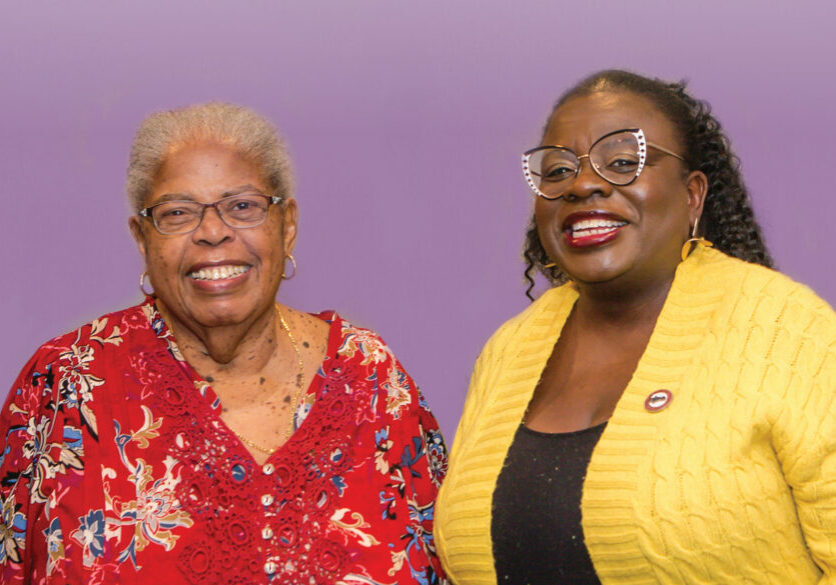One education family because we all matter
By Patrick Rumaker
When Judi Owens was elected secretary-treasurer of NJEA in 1973, she was the first Black statewide officer in the association’s 120-year history. Then, in 1975, she was elected NJEA president—the first Black person to be elected to that office. It was another 38 years before another African American would be elected to statewide office when, in 2013, current NJEA President Sean M. Spiller was elected NJEA secretary-treasurer. Spiller is the first Black man to be elected NJEA president, vice president and secretary-treasurer.
At the NJEA Equity Alliance on Jan. 14, Petal Robertson, the second Black woman in NJEA’s history to be elected as NJEA secretary-treasurer, sat down with Dr. Judith Owens to discuss her leadership at a pivotal time in the association’s history.
“You are Black history, not just for NJEA but for the state of New Jersey and for public education,” Robertson told Owens.
Owens pondered those words.
“Being Black history? I don’t know,” Owens initially said. “I recognize that I was the first person with this color skin to do certain things, and I suppose that serves as an example to—as I jokingly say—help ‘the children’ take over. I am proud of what I did so that we could help each other and the children we work with. It’s important that there be a living, breathing example of what you can be, and I’m happy to be that living breathing example.”
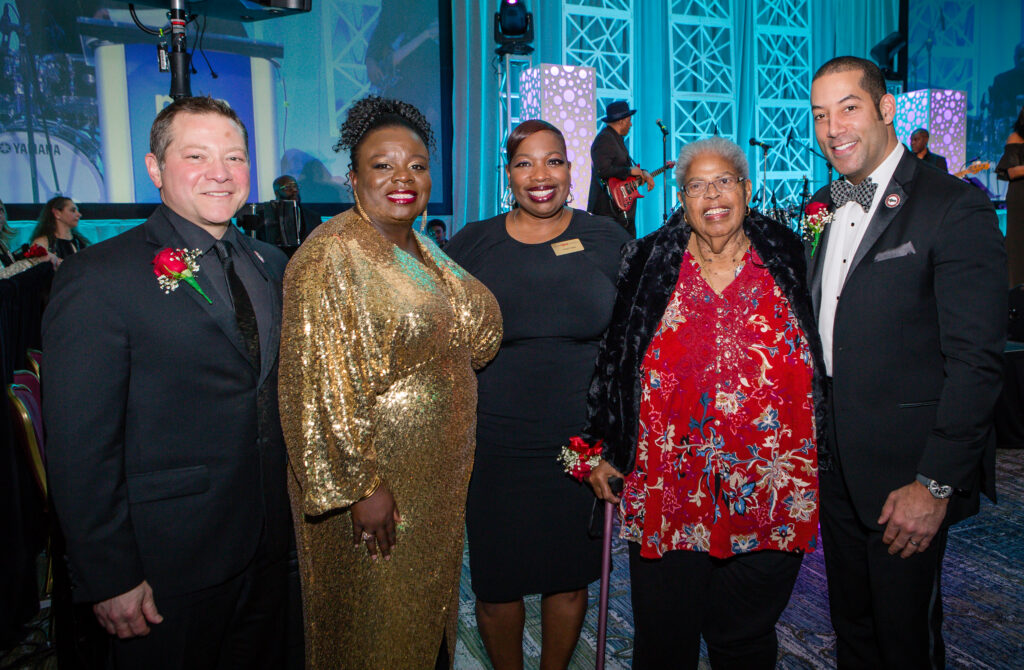
Doing what needed to be done
Owens didn’t set out to be a “living, breathing” example when she began her career in Asbury Park in 1962. The schools there were on a split session schedule at the time, and Owens taught sixth graders in a morning session. While she loved working with the students, Owens did not like the compressed schedule.
“We sort of raced through things, and I hated rushing the kids,” Owens recalled.
Beyond the immediate concerns of split sessions, Owens looked around and saw that there was work to be done beyond teaching.
“I realized that we had to make a difference in Trenton if we were going to help local school districts,” Owens said. “Getting involved with NJEA was a way of doing that and improving things for the whole state.”
Like many future association leaders, Owens started at the local and county levels, active in both the day-to-day work of a local association advocate and in broader campaigns to improve working conditions for public school employees and learning conditions for students.
Owens chaired the salary committee for the Asbury Park Education Association at a time when collective bargaining rights had just been established in New Jersey. Her strong leadership led to her being appointed to the NJEA Fair Play for Teachers Committee. “Fair Play” was the name of a statewide NJEA campaign in 1972. County associations, including the Monmouth County Education Association where Owens served in many roles, such as vice president, had their own Fair Play Committees.
The goal of Fair Play was to lobby for legislation that would clarify the rights of educator unions to call strikes and to strengthen the power of the New Jersey Public Employment Relations Commission to intervene in unfair labor practices.
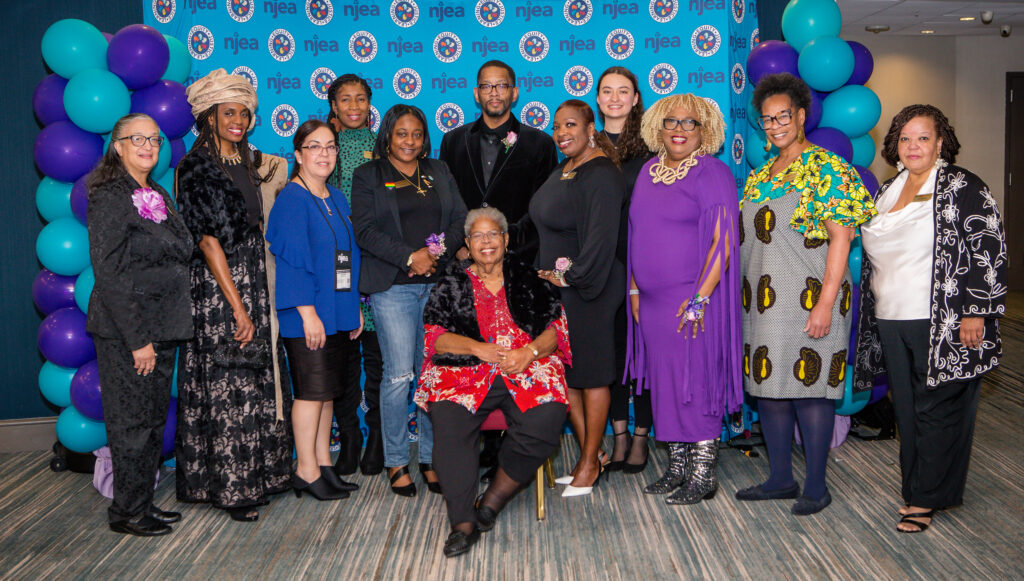
Listening to children
Throughout her interview with Robertson, it was clear that Owens’ true love was teaching and that her activism was, and continues to be, rooted in providing for students. This was especially apparent when Robertson asked Owens what her “superpower” is.
“I don’t know if it’s a superpower, but you need to listen to what the children are saying—and I don’t mean the words they use—I mean listening to the children,” Owens said. “Sometimes kids have a chance to share things with you that they wouldn’t share with anybody else because you listen to them—and there’s a difference between listening and judging.”
Owens emphasized that listening was especially important when working with students who exhibit challenging behaviors.
“When you get past some of the—I don’t want to say bravado, but they have a cover that they’ve put up to defend themselves—and you have to recognize that, and you have to get past that, and understand that some of the children in our schools have terrible situations,” Owens said.
Robertson asked Owens about the value of social-emotional learning beyond teaching academic subjects. Owens hinted that social-emotional learning can be more important than some skills that the public worries have gone by the wayside, such as cursive writing.
“A child’s social-emotional situation can affect how they learn to read and write,” Owens said. “It’s funny, there’s a big controversy going on now because children aren’t taught cursive writing anymore … but you need to understand what kids have to put up with.”
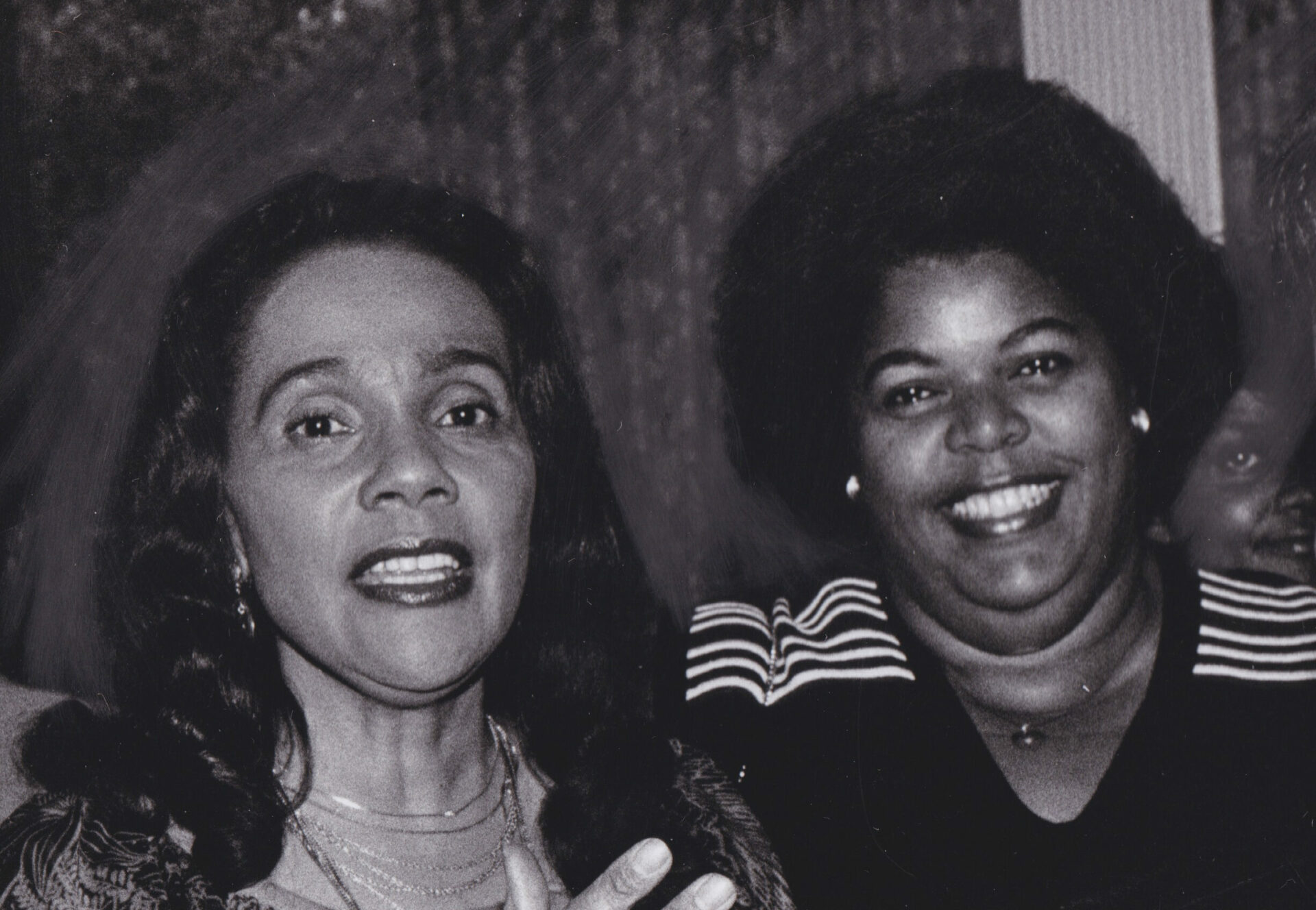
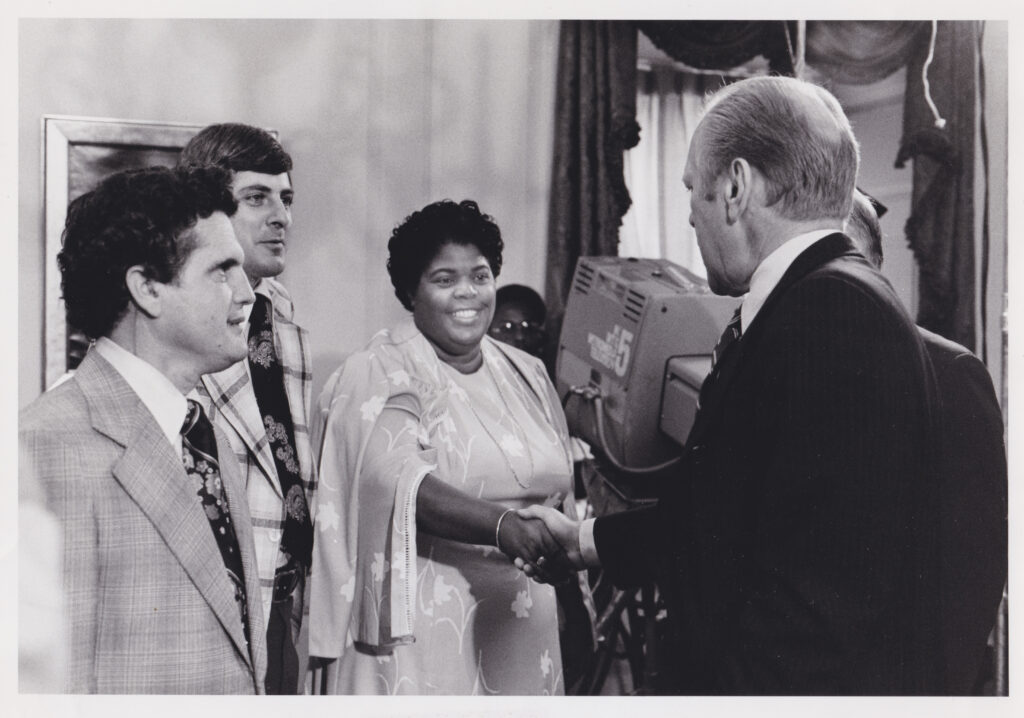
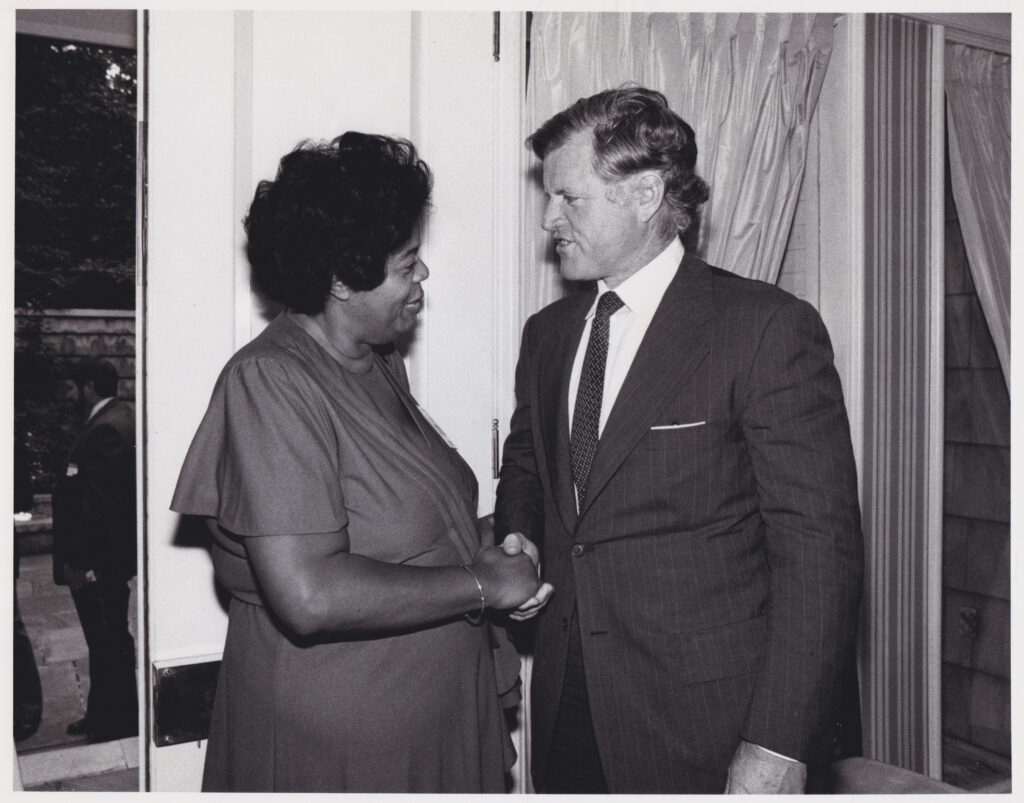
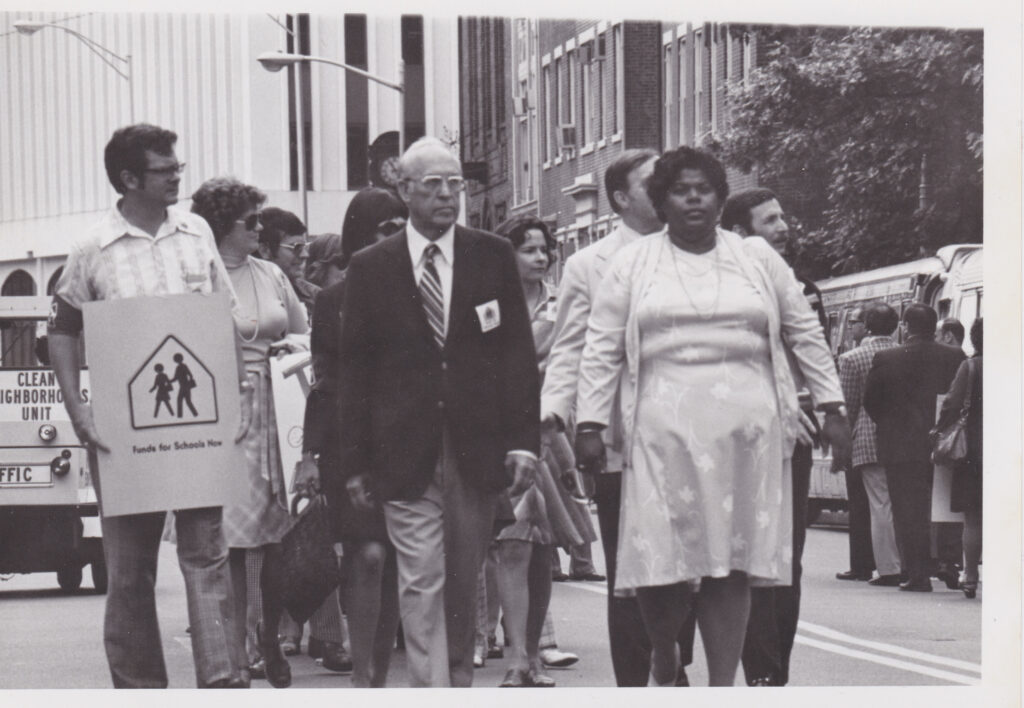
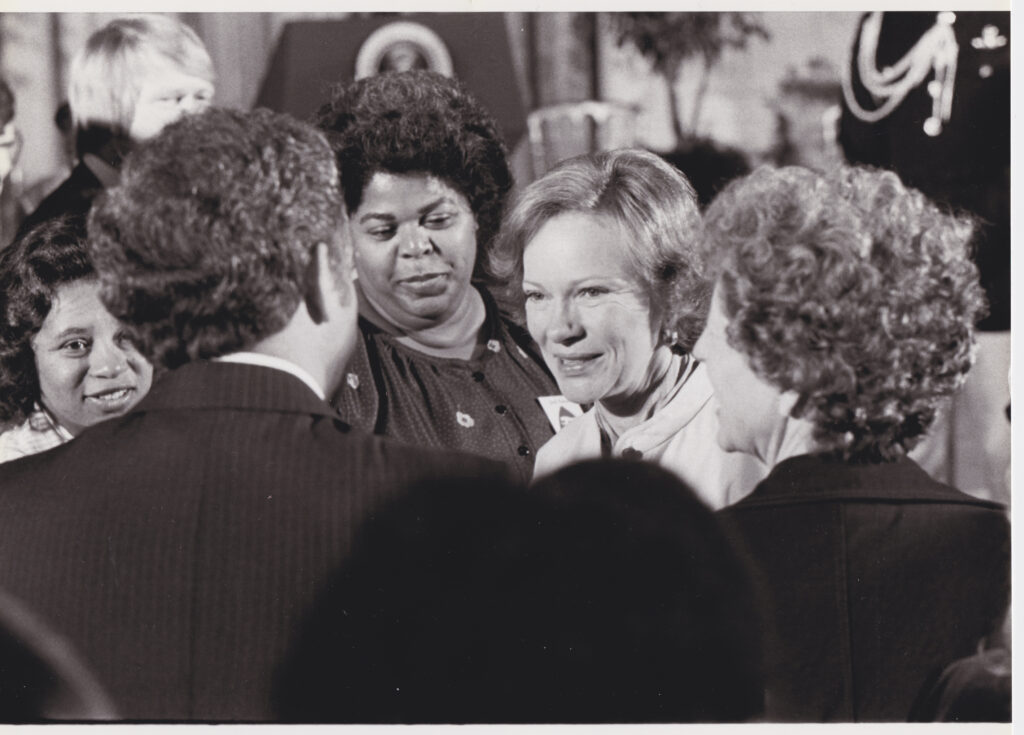
Respect for ESPs
Owens’ association leadership in the 1970s encouraged a growing movement to include educational support professionals (ESPs) as full-fledged members of NJEA. Prior to 1979, NJEA was primarily a teacher organization that provided limited services to ESPs, who were known then as “associate members” of the association. Associate members could not vote in NJEA’s elections or hold office.
That began to change during Owens’ presidency. In 1976, the NJEA Delegate Assembly (D.A.) launched a debate over granting full membership rights to ESP members. In the March 1977 edition of the NJEA Review, just before the D.A. was set to consider amendments to the NJEA Constitution and Bylaws to embrace those rights, Owens wrote, “Shall the New Jersey Education Association remain an organization for the total educational family or be restricted to certificated personnel?”
While the amendment granting full membership rights to ESP was not passed until a year after Owens concluded her term as president, Owens continued to champion the needs of ESP members. Upon winning a seat on the NEA Executive Committee in 1980, she said, “We must work to make the association stronger, to examine support-members’ needs, and examine viable programs in state affiliates in gearing up to provide programs for these members.”
Today she continues to recognize the importance of ESPs in public education.
“All of the people who work with our children are important,” Owens told Robertson. “It doesn’t matter what your job title is. The fact that ESPs work with children and can help them is important. We need to back ESPs up, support them and get them the help they need.”
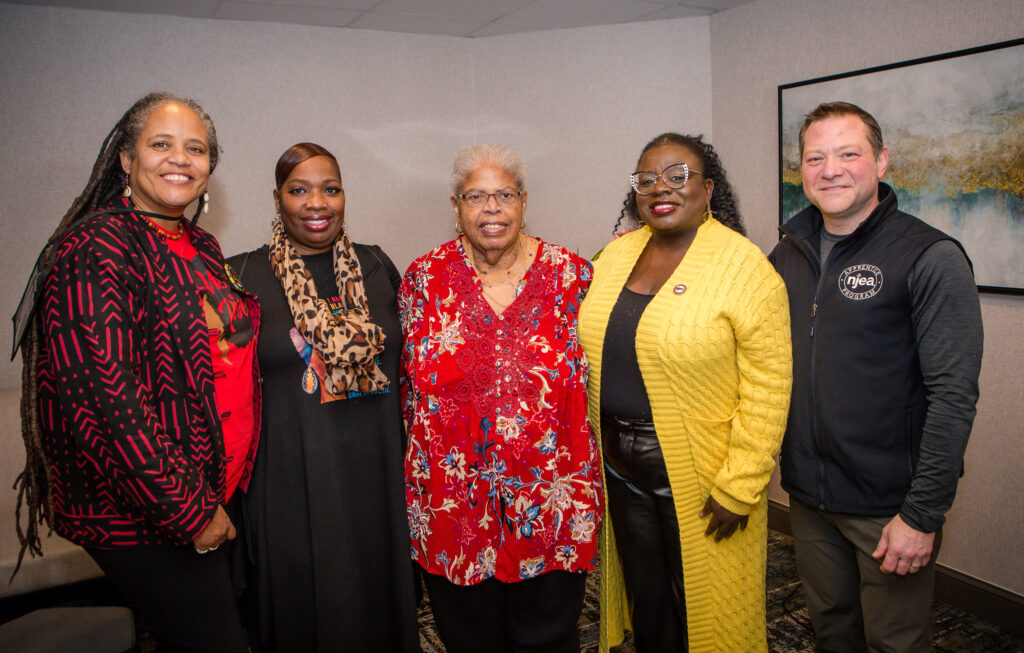
“We all matter”
When Owens was elected NJEA president in 1975, the NJEA Review and the NJEA Reporter did not note that she was the association’s first Black president.
“I don’t think it was discussed,” Owens said. “I don’t know that it necessarily mattered to anyone at that particular time.”
Owens had not served as NJEA vice president. She went directly from the office of secretary-treasurer to NJEA president. Owens noted that this was a decision that she and Frank Totten, who was the incumbent NJEA vice president, made together. Totten would run for reelection as vice president and Owens would run to be president.
“It was a political decision, not necessarily an ethnic-minority decision,” Owens recalled. “I suspect we just didn’t think about it. We didn’t give it the thought that maybe it should have had.”
Owens was elected president in a three-way race, taking a substantial lead over her two opponents—nearly double their combined vote totals. Totten ran unopposed.
Association publications, however, did note Owens’ involvement in racial justice work within and outside the association. Owens was the East Coast regional coordinator of the National Education (NEA) Association Black Caucus and served on the Minority Groups Advisory Council of the New Jersey Department of Education. Owens was active in the NAACP, the New Jersey Minority Groups Caucus, and the Central Jersey Club of the National Association of Negro Business and Professional Women.
In 1976, Owens received the annual achievement award of the National Association of Negro Business and Professional Women’s Clubs.
Association publications also noted her work with the Artists in Residence Program of the New Jersey State Council of the Arts’ Project Advisory Committee and that, in 1977, Gov. Brendan Byrne appointed her to the New Jersey State Board of Public Welfare.
Succeeding Kathryn Stillwell as NJEA president marked another milestone in NJEA history. It was the first time that one woman succeeded another as president.
A voice in the association
NJEA’s members of color discuss the experience of being the only member of color, or one of only a few members of color, at an NJEA event or meeting. Such an experience can discourage members of color from deeper involvement in the association. Today, the NJEA Members of Color Network (njea.org/moc) seeks to overcome that barrier. Robertson asked Owens how she navigated that experience in the 1960s through the 1980s, in the many rooms where she found herself.
“I suspect it goes back to my having a big mouth and not being afraid to use it,” Owens quipped. “I have strong opinions on everything, and I’m not hesitant to speak up. I’m able to discuss things with people and listen to them.”
Robertson went on to ask about the importance of having a voice in the association.
“It’s important to have a voice in our association because we all matter,” Owens said. “We all have different views that we can bring to the association. We need to speak up—not hold things in silence—and we need to open our minds.”
Leading NJEA through change
Owens took over the presidency amid a change in what it meant to be an association leader. She was only the second full-time-release NJEA president. Stillwell, her predecessor, was the first. Prior to Owens and Stillwell, NJEA presidents were still actively teaching in their school districts, doing association work in the evenings. It would be several more years before NJEA vice presidents and secretary-treasurers would serve as full-time-release officers.
As one of the first full-time-release presidents, Owens helped create a new kind of role for officers. In addition to freeing her up to advocate in the Statehouse for members and students, it enabled her to begin a tradition today’s officers have continued—visiting schools and members during the school day.
“It was a chance to get around to different types of schools because Asbury Park was a small district and it was suburban,” Owens recalled. “I got to see the different kinds of education systems throughout the state.”
But her identity as a teacher never left her. She continued to lean on her classroom management skills. She recalled setting some rules for an audience she was addressing at Montclair State College (now University).
“There was this shining light in the back, so I really couldn’t see the audience,” she laughed. “I told people, ‘I can’t see you, but I know you are there, so you have to behave!’”
As an advocate, economic issues were at the forefront of association priorities when Owens held statewide office.
“We had a lot of economic decisions to make,” Owens told Robertson. “This was in the days when we were just beginning negotiations for salaries.”
The collective bargaining law had been passed only seven years before Owens’ presidency, and local associations and school boards were testing its boundaries at the negotiations table. The state income tax was enacted in 1976. The tax was meant to support public schools and provide property tax relief, and NJEA fought vigorously to increase state aid to public schools.
At the same time, a new law imposed caps on school district budgets. It was dubbed the “T & E” law because it stemmed from the first of many lawsuits focused on the “thorough and efficient education” clause in state’s constitution. The “T & E” law included education reform proposals around basic skills in reading and math and changes to teacher evaluation. But the law also required districts to include teachers in the law’s planning and implementation.
At the 1976 NJEA Summer Leadership Conference, which was held at Montclair State, Owens rallied members around the “boon” of increased school funding found in the “T & E” law, but also around the “bane” caused by the challenges to district budgets and attacks on certification and tenure it contained.
“We have work to do,” Owens said at that conference. “We have four aces to use—the strength of our organization, the abilities of our individual members, our practical experience, and the rightness of our cause.”
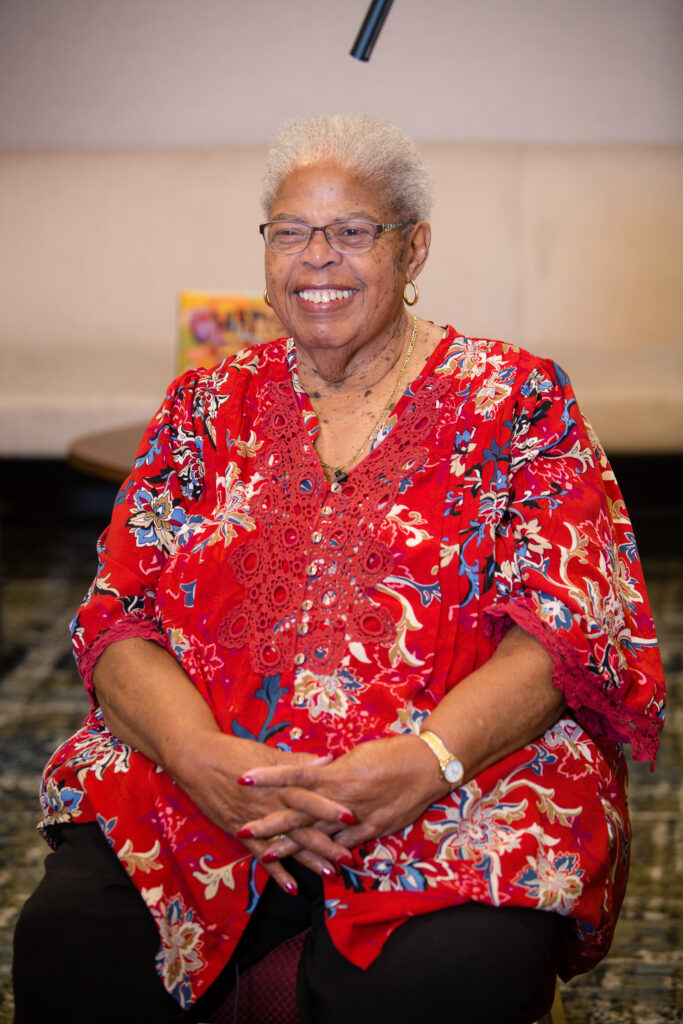
A national leader
After her term as NJEA president, Owens returned to teaching in Asbury Park.
But her commitment to advocacy continued. At the 1979 NEA Representative Assembly she was elected to the NEA Executive Committee. Her acceptance speech is one that could be delivered today.
“We must fight the negative attacks on public education and school employees that result in accountability, budget cuts and threats to teacher protection,” Owens said. “We must develop a factual, positive image of public education and the job it has done for this country. We must also emphasize the facts that school employees are taxpayers and contributors to their communities. We must demonstrate our strength on many levels—instructional, political, social. Let’s move NEA forward—together.”
In 1980, President Jimmy Carter appointed Owens to the Intergovernmental Advisory Council on Education. The council advised Carter, Secretary of Education Shirley Hufstedler and Congress on intergovernmental policies and relations in education. Owens was appointed as the classroom teacher representative to the council. The advisory council was created at the same time that the U.S. Department of Education was created out of the former Department of Health, Education, and Welfare.
After retiring from Asbury Park, and having taught at every level from elementary through high school, Owens became an assistant professor at Trenton State College (now The College of New Jersey). She instructed future educators in the teaching of social studies and science. She supervised student teachers in various school districts.
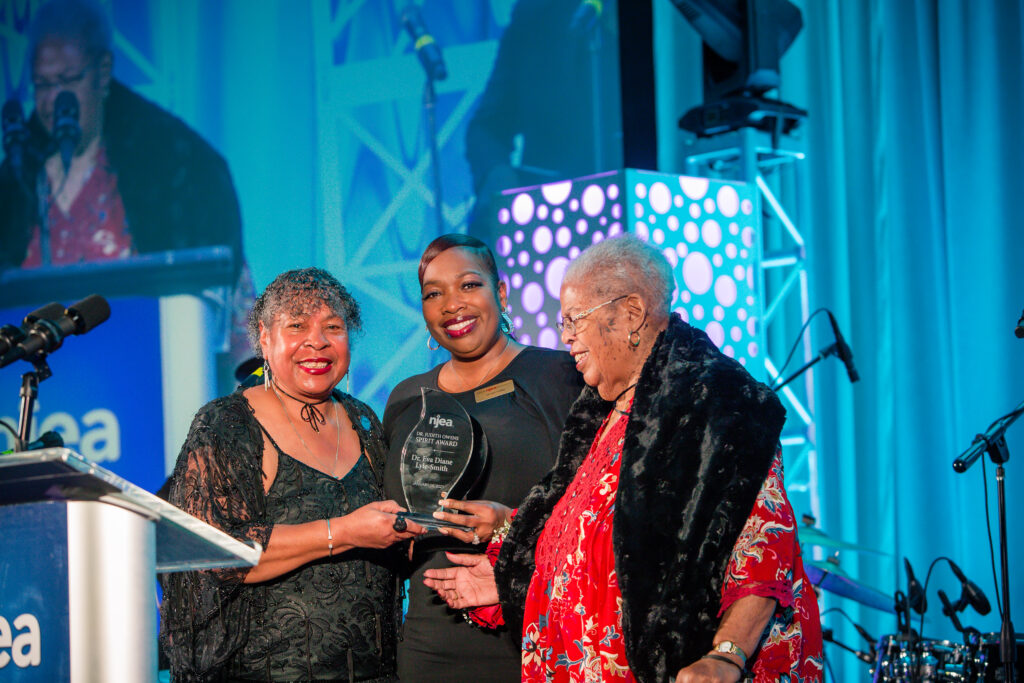
The Dr. Judith Owens Spirit Award
Since 2018, the NJEA Minority Leadership and Recruitment (MLR) Committee has conferred the Dr. Judith Owens Spirit Award. In June 2017, Teaneck Education Association members Delores Wilson-Connors and Mary Joyce Laqui attended an NJEA Team North weekend retreat. The last activity of the weekend tasked all participants with designing an event to engage new members. Everyone broke into teams to develop an original idea for an event.
As a team, Laqui and Connors researched NJEA history and found Owens. They proposed the idea of creating a spirit award in Owens’ name. Laqui and Connors envisioned an inaugural award ceremony and reception, attended by Owens where she would be honored and present the award.
“The mark she made was something to be respected and honored,” they said. “The essence of the award was to lift up her name and legacy, learn from history, and acknowledge current members who exemplify service to all students with a progressive and inclusive spirit of advocacy.”
Since 2012, the MLR Committee had been conferring the NJEA Ethnic Minority Affairs and Leadership Image Award at its annual conference. In the fall of 2017, Alice Barnes-Vasser, the Cape May County representative to the MLR Committee, suggested that the award be renamed to honor Owens. Barnes-Vasser had researched Owens while participating in the NJEA Bolivar L. Graham Practicing Apprentice Program.
The D.A. approved the name change and criteria for the award at its March 2018 meeting.
“I felt that the award was a way to keep her name coming up each year,” Barnes-Vasser said. “Otherwise important people get forgotten.”
At the MLR Conference in April 2018, Willingboro teacher Janene Onyango was its first recipient. Subsequently, the Dr. Judith Owens Spirit Award has been presented at the NJEA Equity Alliance Conference. The awardees have been Bellmawr social worker Regina Andrews-Collette in 2019, Middle Township math teacher David Farrow in 2020, South Orange-Maplewood language arts teacher Thomas “TJ” Whitaker Jr. in 2021, Voorhees teacher Eleanor Clark in 2022, and Camden music teacher Dr. Eva Lyle-Smith in 2023.
At the invitation of Bridgeton educator Dr. Tiffanie ThrBak, the chair of the MLR Committee, this year was the first year that Owens attended this award ceremony.
“Tonight, at the Equity Alliance Awards, an award named after you will be given—the Dr. Judith Owens Spirit Award,” Robertson said to Owens. “What would you want that recipient to know about you and what you value?”
“It’s important that we help each other, that we have examples for the children that we work with,” Owens said. “We join together. And I love that it’s called the Spirit Award because it’s the spirit of friendship, union and working together. And I think that’s what’s important to help both each other and the children that we serve.”
